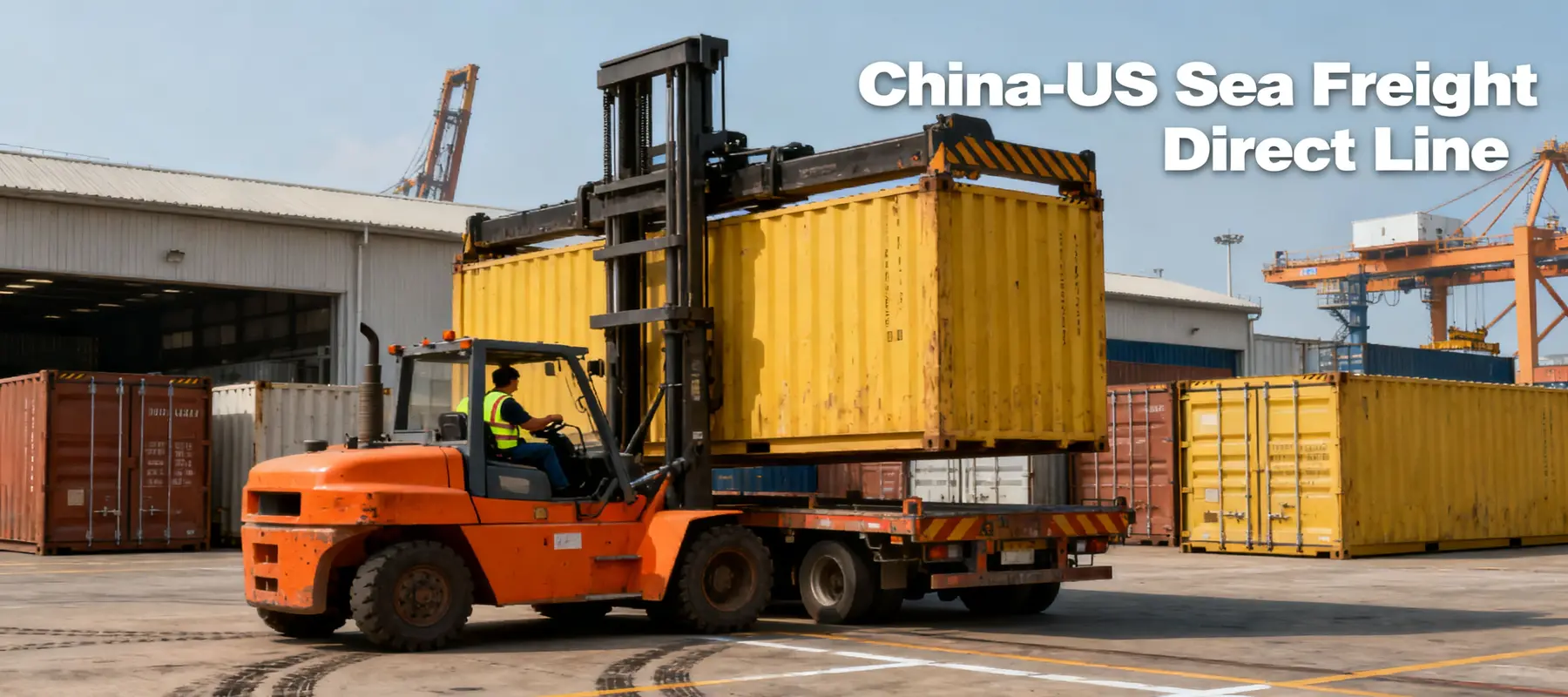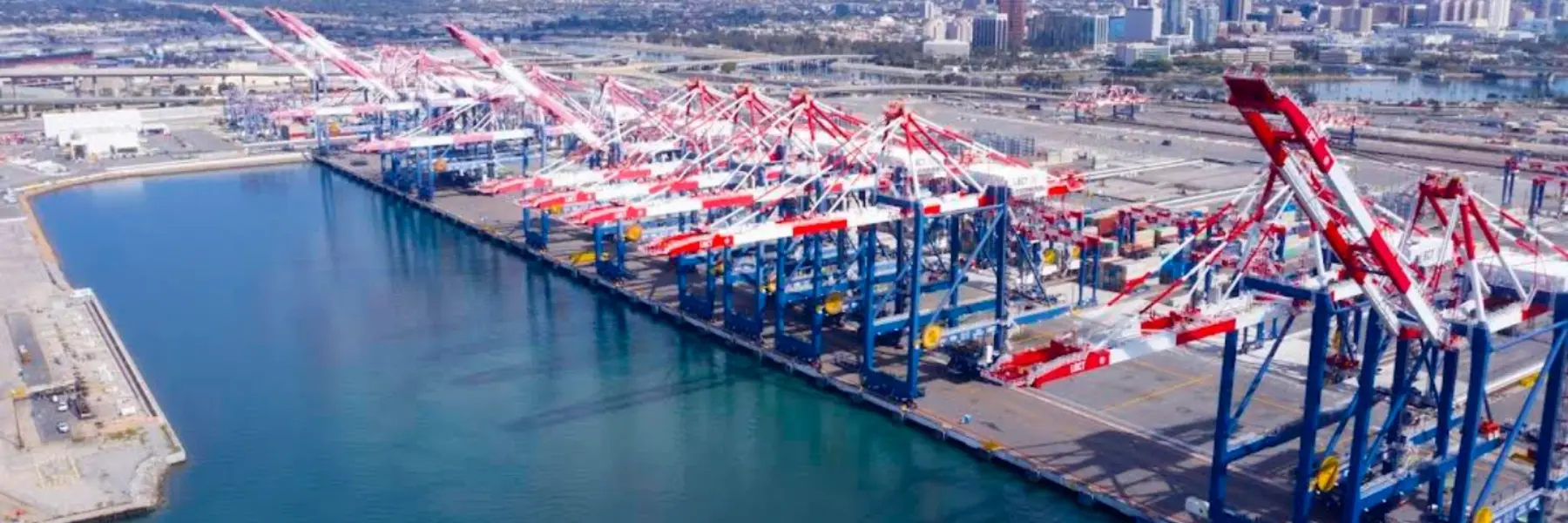
Shipping from China to ST PAUL,MN: Everything You Need to Know About Freight, Transit, and Compliance
ST PAUL, MN, a bustling hub for manufacturing, healthcare, and agriculture, relies heavily on global trade to sustain its industries. For businesses importing goods, shipping from China to ST PAUL,MN requires careful planning—from choosing between Ocean FCL, Ocean LCL, or Airfreight to navigating U.S. customs regulations. Partnering with a seasoned China Freight forwarder like WanHaoFreight can turn complex logistics into a seamless process. As part of the WanHaoFreight team, we’ve put together this expanded guide to break down every detail, from rates and schedules to insider tips, to help you make informed decisions.
Why ST PAUL,MN Matters in Global Shipping
While not a coastal city, ST PAUL’s strategic location—connected to the Mississippi River and major highways like I-94—makes it a critical inland distribution center for the Upper Midwest. Most shipments from China reach ST PAUL via two routes: ocean freight to U.S. West Coast international seaports (Los Angeles, Long Beach) or East Coast ports (New York, Savannah), followed by trucking or rail; or airfreight to Minneapolis-St. Paul International Airport (MSP), the region’s primary air cargo hub.
For businesses, this means balancing transit time and cost: ocean freight is cheaper but slower, while airfreight prioritizes speed. As a reliable freight forwarder, we at WanHaoFreight help optimize this balance, leveraging our network of international seaports and airlines to find the best route for your cargo.
Ocean Freight: FCL (Full Container Load) – Rates, Schedules & Best Practices
Ocean FCL is ideal for large shipments (15+ CBM) where you need exclusive use of a container. It’s cost-effective for bulk goods like machinery, furniture, or industrial parts. Here’s what you need to know:
Ocean LCL (Less than Container Load) – Perfect for Smaller Shipments
For shipments under 15 CBM, Ocean LCL lets you share container space, reducing costs. It’s ideal for e-commerce goods, samples, or low-volume imports.
Airfreight: Speed for Time-Sensitive Cargo
When deadlines matter—think seasonal inventory, perishables, or emergency parts—Airfreight from China to ST PAUL,MN delivers in 3-7 days.
ST PAUL,MN Customs Clearance: A Step-by-Step Breakdown
U.S. Customs and Border Protection (CBP) enforces strict rules for shipments entering ST PAUL. Mistakes here cause delays, fines, or even cargo seizure. Here’s how we help you comply:
Why WanHaoFreight Forwarder Stands Out
With 22+ years as a China Freight forwarder, we simplify shipping from China to ST PAUL,MN through expertise, technology, and global reach:
Final Tips for Shipping from China to ST PAUL,MN
Shipping from China to ST PAUL,MN doesn’t have to be overwhelming. With the right mix of Ocean FCL, LCL, or Airfreight, plus our expert guidance at WanHaoFreight forwarder, you can streamline your supply chain, reduce costs, and keep your business running smoothly. Ready to start? Get A Quote today and experience stress-free international shipping.
Ports of Origin in China: At WanHaoFreight, we offer FCL services from all major Chinese international seaports, each with unique advantages:
Shanghai: The busiest port in China, with daily sailings to Los Angeles. Transit time to L.A. is 18-22 days, plus 2-3 days trucking to ST PAUL. 2025 rates: 1,400-1,700 (20GP), 1,900-2,300 (40HC).
Shenzhen: A hub for electronics and textiles. Sailings to Long Beach take 20-24 days, with trucking to ST PAUL adding 350-450. Rates: 1,350-1,650 (20GP), 1,850-2,250 (40HC).
Qingdao: Popular for northern China shipments (e.g., auto parts). Transit to Seattle is 16-19 days, with rail to ST PAUL (3-4 days) costing 280-380. Rates: 1,300-1,550 (20GP), 1,750-2,100 (40HC).
Xiamen: A fast-growing port with competitive FCL rates—1,450-1,750 for 20GP shipments to Los Angeles, with transit time 21-25 days. Our local teams in Xiamen secure preferential rates by consolidating client shipments, passing savings directly to you.
Carriers & Schedules: We partner with major lines like Maersk, Hapag-Lloyd, and COSCO, which offer weekly sailings. Peak seasons (August-November, pre-holiday) see tighter capacity, so we recommend booking 6-8 weeks in advance. Cut-off times (when cargo must be at the port) are 3-5 days before departure—miss this, and your shipment waits for the next sailing, but our team will always remind you of deadlines to avoid delays.
Pricing & Transit: LCL rates are calculated per cubic meter (CBM). From Shanghai to ST PAUL, we at WanHaoFreight charge 190-240/CBM, including consolidation, ocean freight, and inland trucking. Total transit: 28-35 days (port-to-door). From Guangzhou, rates are slightly higher (200-250/CBM) due to longer coastal transport to main hubs, but we’ll always be transparent about these variables.
How LCL Works: Your cargo is consolidated at our warehouses in China (Shanghai, Shenzhen, Ningbo) with other shipments bound for the U.S. Once at the U.S. port (e.g., Los Angeles), it’s deconsolidated, cleared through customs, then trucked to ST PAUL. This shared model lowers costs but adds 3-5 days vs. FCL—worth it for small volumes, and we’ll track every step to keep you updated.
Avoiding LCL Pitfalls: Under-declaring CBM to save money backfires: carriers re-weigh cargo, charging penalties (100-300). Our pre-shipment inspections ensure accurate measurements, so you never face unexpected fees. Also, we recommend labeling packages clearly with “LCL Consolidation: ST PAUL,MN” to prevent misrouting, and our team can assist with proper labeling if needed.
Airports & Routes: Most cargo we handle flies from major Chinese airports (Beijing PEK, Shanghai Pudong PVG, Guangzhou CAN) to Chicago O’Hare (ORD) or MSP, then trucks to ST PAUL. Direct flights from PVG to ORD take 14-16 hours, with total door-to-door time 3-5 days. Indirect flights (via Seoul or Tokyo) cost 20-30% less but add 2-3 days, and we’ll help you choose based on your timeline and budget.
Rates & Calculations: Airfreight rates depend on weight and volume (whichever is higher). For 2025, general cargo (100kg+) costs 3.50-6.00/kg. Example: 300kg of medical supplies from Beijing to ST PAUL: 3.80/kg = 1,140, plus $150 customs brokerage. For lightweight, bulky items (e.g., furniture), “dimensional weight” applies: (length x width x height in cm)/6000 = chargeable weight, and our quoting tool automatically calculates this to avoid surprises.
Specialized Air Services: We offer solutions for sensitive cargo:
Refrigerated airfreight for pharmaceuticals (temp-controlled at 2-8°C) – adds 1.20-2.00/kg, with real-time temperature tracking via our portal.
Dangerous goods (e.g., batteries) – requires IATA certification, which our team handles, with rates 7.00-9.00/kg.
Express options (DHL, FedEx) for urgent shipments under 50kg – 25-40/kg, 2-3 day delivery, with priority handling from start to finish.
Inland Chinese Airports: We’ve expanded services to inland Chinese airports like Chengdu (CTU) to meet growing demand. Chengdu offers flights to Seattle (SEA) with 5-6 day door-to-door service to ST PAUL, with rates 4.00-5.50/kg—ideal for businesses in western China looking to streamline shipments.
Required Documents:
Commercial Invoice: Must include seller/buyer details, HS codes (6-10 digits), quantity, unit price, and total value. Under-declaring value (to lower duties) is illegal—CBP uses databases to verify market prices, so we’ll review your invoice to ensure accuracy.
Bill of Lading (BOL) or Airway Bill (AWB): Proof of ownership and shipment details. We ensure “ST PAUL,MN” is listed as the final destination, not just the port, to prevent routing errors.
Packing List: Itemized by package, with weights and dimensions. Critical for CBP to assess inspection risk, and our team can help draft this if you’re unsure.
Additional Certificates: Food items need FDA registration; electronics require FCC compliance; textiles need country-of-origin labels. We’ll flag these requirements early and assist with paperwork.
Duties & Taxes: ST PAUL uses the Harmonized Tariff Schedule (HTS) to calculate duties. For example, Chinese furniture (HS 9403.60) has a 5.3% duty rate. Our customs team helps classify goods correctly to avoid overpayment—we’ve saved clients an average of 8-12% on duties by ensuring accurate classification.

Common Delays & How We Avoid Them:
Missing HS codes: 30% of delays stem from this. We use CBP’s HTS search tool and our in-house expertise to assign correct codes.
Incomplete invoices: We’ll remind you to include “reason for export” (e.g., “for resale”) and currency to prevent rejection.
Random inspections: 15% of shipments are checked. We pre-alert CBP with advance manifests, reducing inspection odds by 40%—our long-standing relationships with CBP officers help streamline this process.
Global Network: We’re partnered with 616 international seaports and 200+ airlines, ensuring flexible routing. For example, if Los Angeles port congestion delays your FCL, we’ll reroute via Oakland—adding 2 days but avoiding 1-week backups, keeping your supply chain on track.
Tech-Driven Solutions: Our online portal lets you track shipments in real time, get instant quotes, and upload documents. The “Rate Predictor” tool forecasts 30-day price trends, helping you lock in rates before peak season hikes—we built this tool based on client feedback to make planning easier.
Specialized Cargo Expertise: From oversized machinery (needing permits for U.S. highways) to fragile art (custom crating), our team handles unique needs. A recent client shipped 5-ton industrial printers from Wuhan to ST PAUL—we arranged flatbed trucks and oversize permits, delivering on time and within budget.
End-to-End Support: Beyond freight, we offer warehousing in Shanghai (for pre-shipment storage), cargo insurance (0.3% of declared value), and last-mile delivery to ST PAUL’s industrial parks (e.g., Energy Park, Midway). We’re with you from the moment you book until your cargo arrives.
Client Success Stories: A Minnesota-based furniture retailer struggled with LCL delays until partnering with us. By consolidating their shipments in Ningbo and using priority deconsolidation in L.A., transit time dropped from 40 to 32 days, cutting holding costs by 18%. Their feedback? “WanHaoFreight turned our logistics from a headache into a competitive advantage.”
Plan for Seasons: Winter (December-February) can slow trucking from West Coast ports to ST PAUL due to snow—we recommend adding 2-3 days to your timeline, and we’ll monitor weather conditions to adjust routes if needed.
Compare FCL vs. LCL: For 12-15 CBM, calculate both: sometimes FCL is cheaper than LCL if rates are low. Our “Compare Tool” does this instantly, so you can make data-driven decisions.
Insure Your Cargo: Ocean freight has a 2-3% loss/damage rate; airfreight is 0.5%, but high-value goods need coverage. We offer flexible insurance plans tailored to your cargo’s value and risk.
Leverage Free Quotes: Get A Quote from us—our 24/7 team provides customized rates within 2 hours, no obligation. We’ll answer all your questions before you commit.
 Easy Shipping From Global, Save Cost
Easy Shipping From Global, Save Cost













